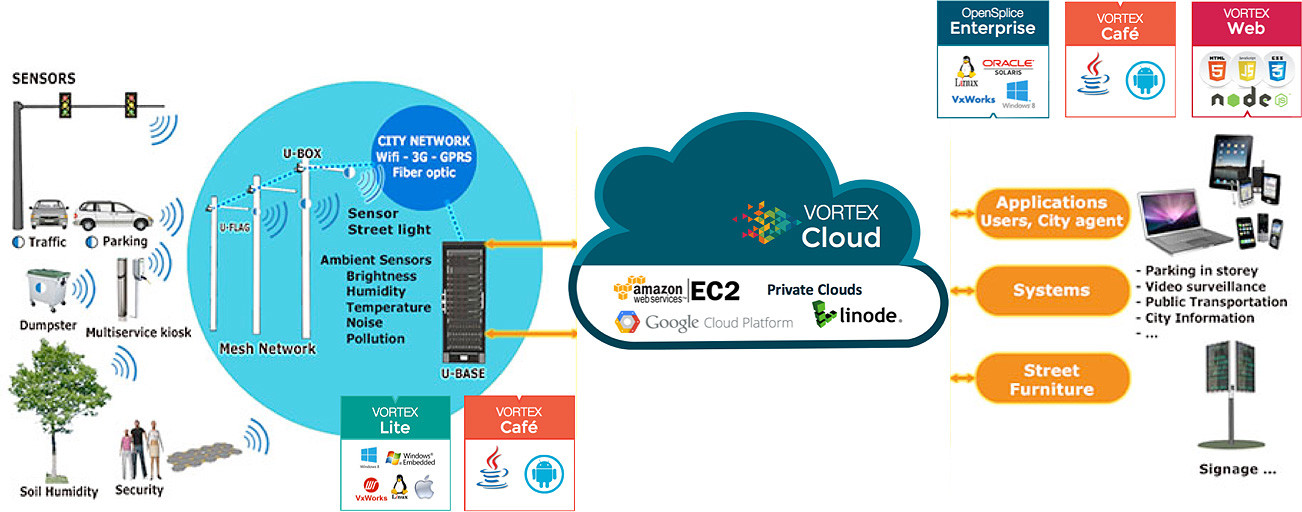The smartest city in the world
August 06, 2014

In my last post, I explained how the OMG's Data Distribution Service standard provides the ideal data-sharing platform for Internet of Things and Indu...
In my last post, I explained how the OMG’s Data Distribution Service standard provides the ideal data-sharing platform for Internet of Things and Industrial Internet applications. In this post, considering that it is time for summer vacations, I decided to take you on a voyage in the smartest city of the world: Nice, France.
Besides being placed on the heart of the beautiful Côte d’Azur (a.k.a the French Riviera) between Monaco and Cannes, Nice has recently gained media attention thanks to a series of innovative projects aimed at preserving the environment and improving the quality of life through creative use of technology. In particular, Connected Boulevard, the project I’ll describe in this post, targets and enhances city management capabilities.
To give you some context, Nice attracts approximately 10 million visitors a year and in 2013 it was named as one of the best European destinations. To continue to attract visitors and improve the living experience of its citizens, the city launched the Connected Boulevard project as a way to develop an open and extensible smart city platform that could be used to manage and optimize all aspects of city management, such as parking and traffic, street lighting, waste disposal, and environmental quality. DDS (specifically PrismTech‘s Vortex platform) was used at the core of the Connected Boulevard platform for making relevant data ubiquitously available. But before telling you how DDS was used, let me explain the architecture of the system.
Connected Boulevard architecture
The Connected Boulevard architecture designed by the ThinkGlobal Team aims at maximizing extensibility and minimizing maintenance costs. As for any long-lived system, the main cost comes from the system maintenance as opposed to its initial development. In smart city applications, one of the main sources of maintenance costs is the replacement of sensor batteries. Thus, to reduce the operating costs and maximize the battery lifespan, the Connected Boulevard project took a decision that was in contrast with the trend promoted by the many supporters of smart devices and edge computing. The sensors used throughout the Connected Boulevard project are quite “dumb.” In most cases, they simply measure physical properties such as temperature and humidity, magnetic field intensity, and luminosity. These measurements are then collected and elaborated by sophisticated signal processing algorithms within a cloud, where the data is then “understood” and acted upon. For instance, the variation of magnetic field is used to detect parked cars; temperature and humidity are used to decide when to activate sprinklers; luminosity, sometime used in conjunction with motion detection, is used to control street lighting.
As shown in the figure below, sensors use low power protocols to communicate with aggregators that are installed throughout the roads. The aggregators, powered by the power line, use DDS to share the collected data. Through DDS, collected data is made available wherever required. Recall that DDS is equipped with a dynamic discovery protocol that matches new interests dynamically and establishes appropriate communication paths. Consumers of this sensor data include applications running on an IaaS infrastructure that perform analytics.
These applications use DDS’s caching features to maintain in-memory, a window of data over which they perform real-time analytics. The result of analytics is shared through DDS with applications that have to decide what to do, as well as with other applications that are interested in receiving it – such as the mobile applications including the Nice City Pass, used to check free parking places as well as to reserve them. As an example, if a parking place is occupied by a car and that parking place is not paid for, a notification is sent to the traffic police to ensure that the violating car is fined. Finally, it is important to remark that all data is collected, owned, and managed by the city of Nice.
Measurable benefits
Nice’s Connected Boulevard has been operating for nearly two years and – besides being a very cool project from a technology perspective – it has had a measurable positive impact on the city. After its initial installation, traffic congestion was reduced by 30 percent, parking income improved by 35 percent, and air pollution reduced by 25 percent. In addition, the forecasted saving on street lighting is 20-80 percent, depending on the type of roads and their lighting constraints.
In conclusion, regardless of the hype and the fad that at times is glazed around the Internet of Things and Industrial Internet, the reality is that these systems are being built and are delivering measurable benefits. In addition, DDS is a standard that has proven its applicability and value on key Internet of Things and Industrial Internet applications, of which the Nice smart city infrastructure is one example.
Angelo Corsaro, Ph.D., is Chief Technology Officer at PrismTech. Angelo directs the company’s technology strategy, planning, evolution, and evangelism. He also leads the strategic standardization at the Object Management Group, where he co-chairs the Data Distribution Service Special Interest Group and serves on its Architecture Board. Angelo is a widely known and cited expert in the field of real-time and distributed systems, intelligent data sharing platforms and software patterns, has authored several international standards, and has more than 10 years of experience in technology management and design of high performance mission- and business-critical distributed systems. Prior to joining PrismTech, Angelo served as a Software Scientist within the SELEX-SI Strategic and Technological Planning Directorate. He earned a Ph.D. and a M.S. in Computer Science from the Washington University in St. Louis, and a Laurea Magna cum Laude in Computer Engineering from the University of Catania, Italy.






